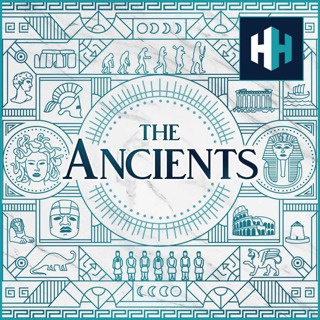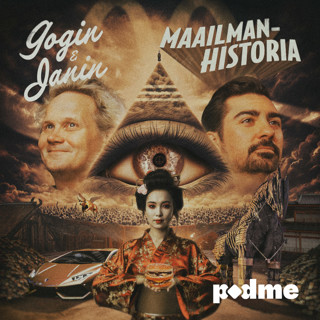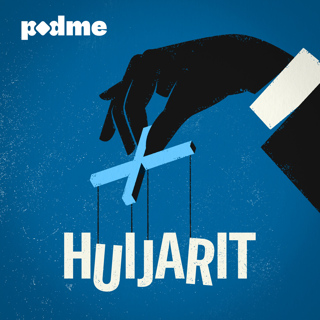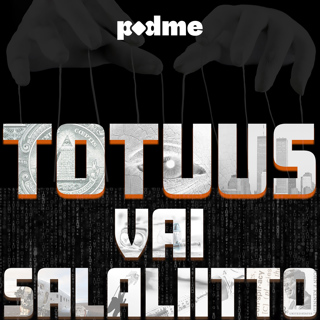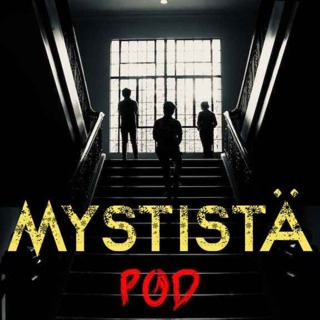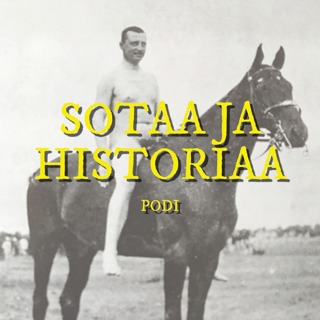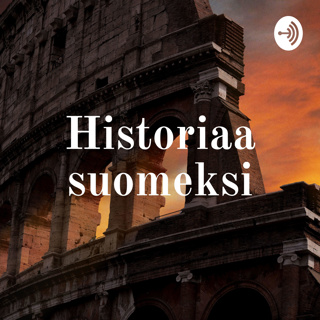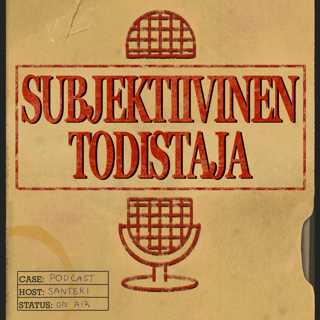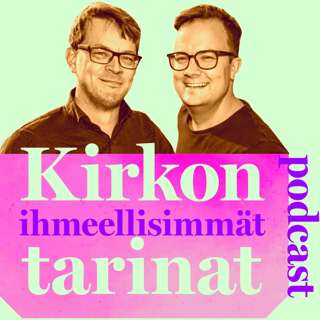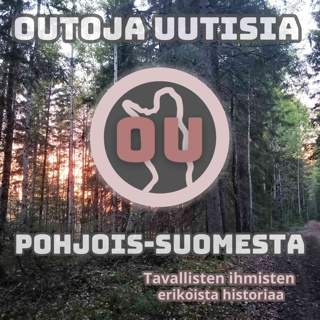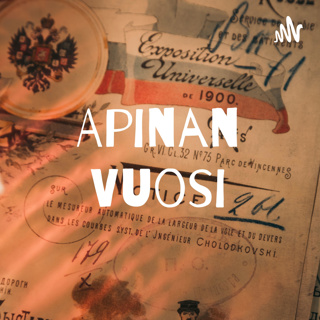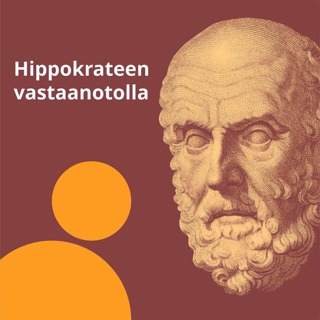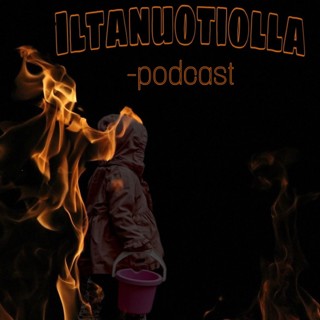
Indonesian Cave Art: A Dramatic New Discovery
It’s a paradox for the ages, breaking news about people who lived and died thousands of years ago. This discovery is no different, because Adam Brumm and his team in Sulawesi have released their discovery of the oldest known figurative art made by modern humans. And the oldest known cave art depicting the animal kingdom. The paintings on the Indonesian island are over 45,500 years old, and feature three pigs alongside the stencilled outlines of the hands of their prehistoric painter (perhaps). Listen as Adam tells Tristan about his research on this beautiful island, how the pigs were discovered and what they can tell us about the first humans to arrive in Southeast Asia. Hosted on Acast. See acast.com/privacy for more information.
17 Tammi 202143min

Tomyris: A Warrior Queen's Revenge
Her legend afforded her a place alongside Eve, Cleopatra and Venus, to name just a few of the famous women whose biographies were collected by Giovanni Boccaccio in 1361-2. Though not a household name as the others may be, Tomyris’ story contains all of the hallmarks of an epic. Tomyris was Queen of the Massagetae people, from present day Central Asia, in the 6th century BC. She is remembered in Herodotus’ first book for her vengeful challenge to the bloodthirsty Cyrus the Great. To talk about Tomyris, Queen and commander, Tristan was joined by Christian Djurslev of Aarhus University. Hosted on Acast. See acast.com/privacy for more information.
14 Tammi 202140min

Oppian’s Halieutica: Creatures of the Ancient Deep
The deep blue sea is the subject of speculation to this day but, in this episode, we have access to the mysteries, myths and misgivings that were associated with the ocean in the 2nd century AD. The Halieutica was written in Hexameter by the Greek poet Oppian, and dedicated to the then Roman Emperor Marcus Aurelius and his son Commodus. Emily Kneebone from the University of Nottingham has recently completed a monograph on this overlooked Epic, and she is here to tell us about the sea and its often personified, often hostile inhabitants. Hosted on Acast. See acast.com/privacy for more information.
10 Tammi 202146min

Hannibal: Battle by the Trebia
It’s 218 BC, and Hannibal has made the mammoth journey across the Alps en route to Italy, accompanied by his army, their horses, and their elephants. But the real battle is yet to come, and in this fantastic second episode with Louis Rawlings, he takes us onto the battlefield with the Carthaginian army and into the fight against their Roman and Allied opposition. Louis and Tristan discuss the strengths and weaknesses of each side, and the tactics deployed under Hannibal’s remarkable leadership. Hosted on Acast. See acast.com/privacy for more information.
7 Tammi 202145min

How Ancient Egypt Stayed Egyptian
The length of time between the rule of Cleopatra and the erection of the Pyramids is the same as that between now and the birth of Jesus Christ. With that in mind, it is perhaps no surprise that some periods of Ancient Egypt fall beneath the radar. The Late Period of Ancient Egypt, however, is not without drama. These final centuries are characterised by repeated invasions and leadership by foreign rulers. Chris Naunton is an Egyptologist, writer and broadcaster. He spoke to Tristan about the influence of external forces on Ancient Egyptian society from the Third Intermediate Period through the Late Period. This included Libyan, Assyrian, Persian and, notably, an Ancients’ favourite, the Macedonian Alexander the Great. Hosted on Acast. See acast.com/privacy for more information.
3 Tammi 202155min

El Kurru: Egypt's Nubian Pharaohs
In the 8th and 7th centuries BC, Ancient Egypt was ruled by an extraordinary dynasty. This was the 25th Dynasty, also known as the Nubian Dynasty because of their Kushite roots. They maintained their Nubian identity, with one of the most striking examples of this being the site of El-Kurru. Situated in what is today Northern Sudan, this was one of the key cemeteries for the 25th Dynasty. Complete with unique-styled pyramids, beautifully-preserved wall paintings and tumuli, archaeologists have made some remarkable discoveries at this site over the past century. One such archaeologist is Dr Rachael Dann, from the University of Copenhagen. Alongside a dedicated team, Rachael has spent years working at El-Kurru. In this podcast she explains what we know about the site and the archaeology that survives. The second of our episodes on Ancient Egypt. Hosted on Acast. See acast.com/privacy for more information.
31 Joulu 202056min

Hatshepsut: Egypt's Hidden Pharaoh
Hatshepsut – whose name means “foremost of noblewomen” – was an exceptional figure in the history of Ancient Egypt. Only the second woman in history to assume the title of pharaoh, during her reign she oversaw the building of monumental temples, established trade connections with far away African powers and oversaw extended periods of peace. Hatshepsut's legacy in the history of Ancient Egypt is remarkable and the fact that her story has been largely-forgotten is one of the great tragedies of antiquity. To shine a light on Hatshepsut, Tristan was delighted to be joined by Lucia Gahlin, a brilliant Egyptologist with a great passion for the story of Hatshepsut. This was a great chat, enjoy. Lucia also stars in our new History Hit documentary about Hatshepsut, featuring alongside the likes of Kara Cooney and Monica Hanna. Please do have a watch: historyhit.com/hatshepsut Hosted on Acast. See acast.com/privacy for more information.
27 Joulu 20201h 4min
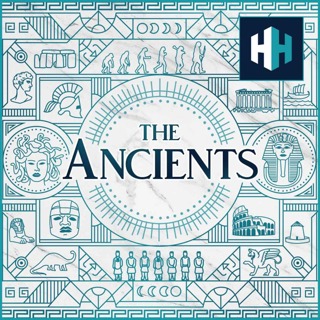
The Mystery of Mithras: A Pagan Christmas?
The clichéd Christmas: white snow, hot fires, mulled wine and a feast. This might not be the case were the holiday not to fall on 25 December and, although many things have been missed in 2020, the usual questions of whether this is the right date arrived reliably on time. So, for this episode, Tristan spoke to Professor Matthew McCarty to find out whether Christmas Day was really placed in December to supplant non-Christian worship, in particular that of Mithras. Matthew is Assistant Professor of Roman Archaeology at the University of British Columbia. He has been directing the field excavation of a mithraeum in Apulum (Romania), the first scientifically excavated mithraeum in the province of Dacia. In this festive episode, he shares his insight into the social dynamics of ritual practices in the sanctuary at Apulum and elsewhere. Hosted on Acast. See acast.com/privacy for more information.
24 Joulu 202054min
